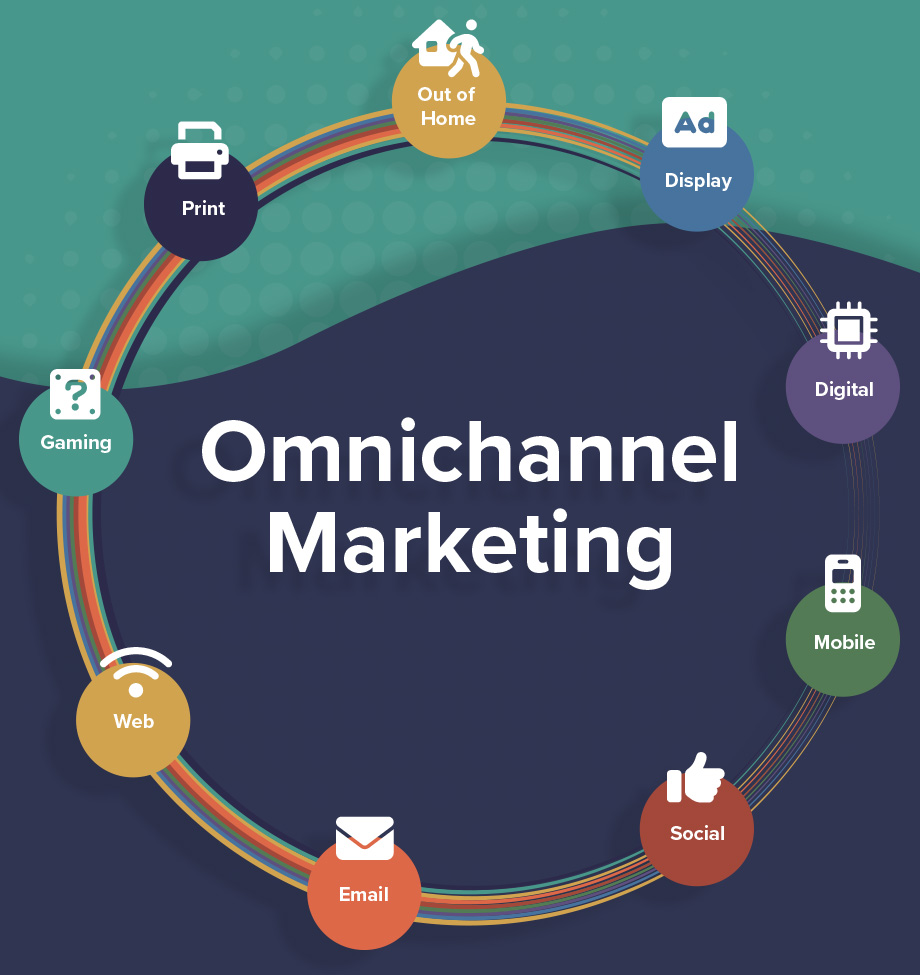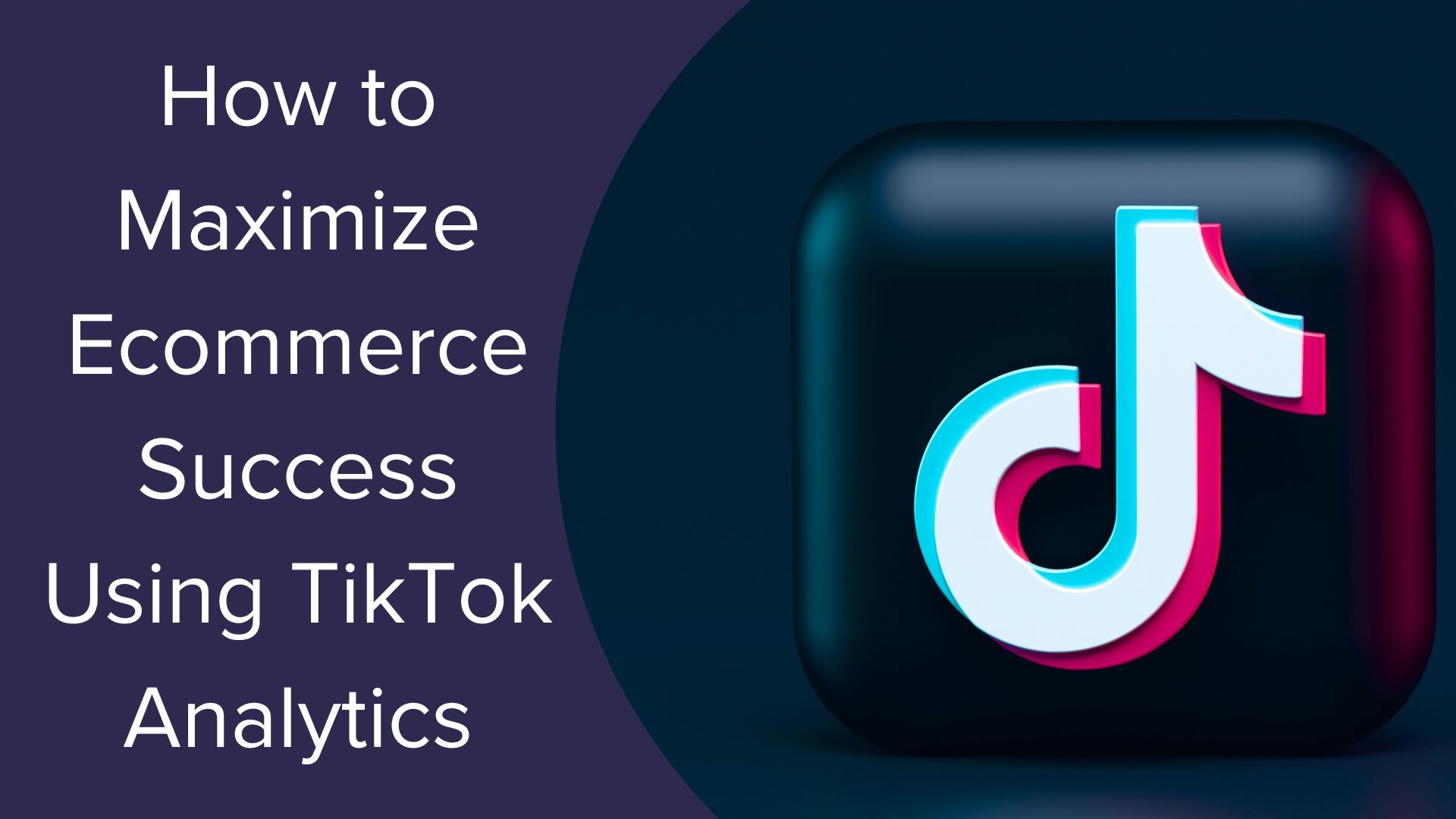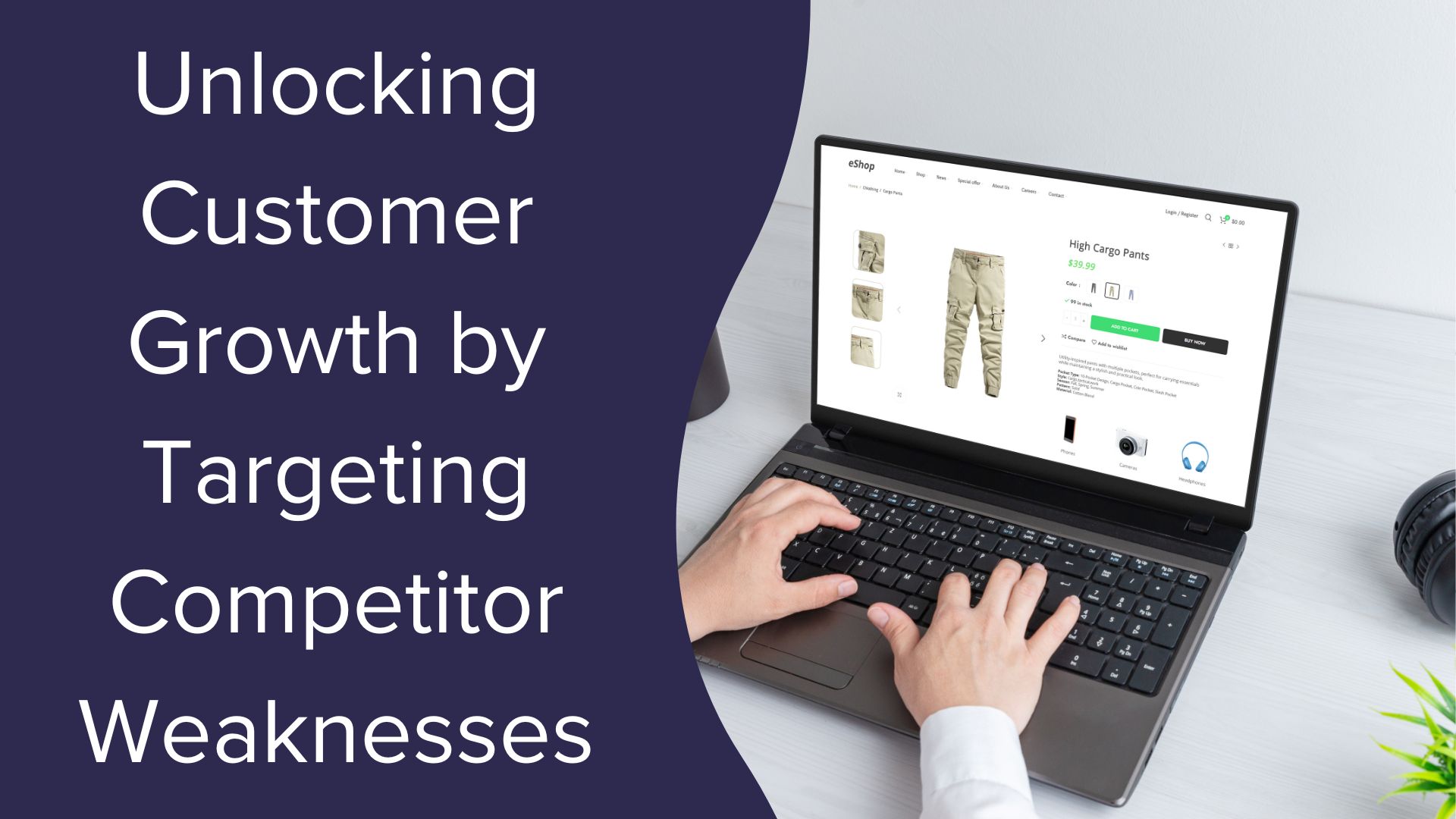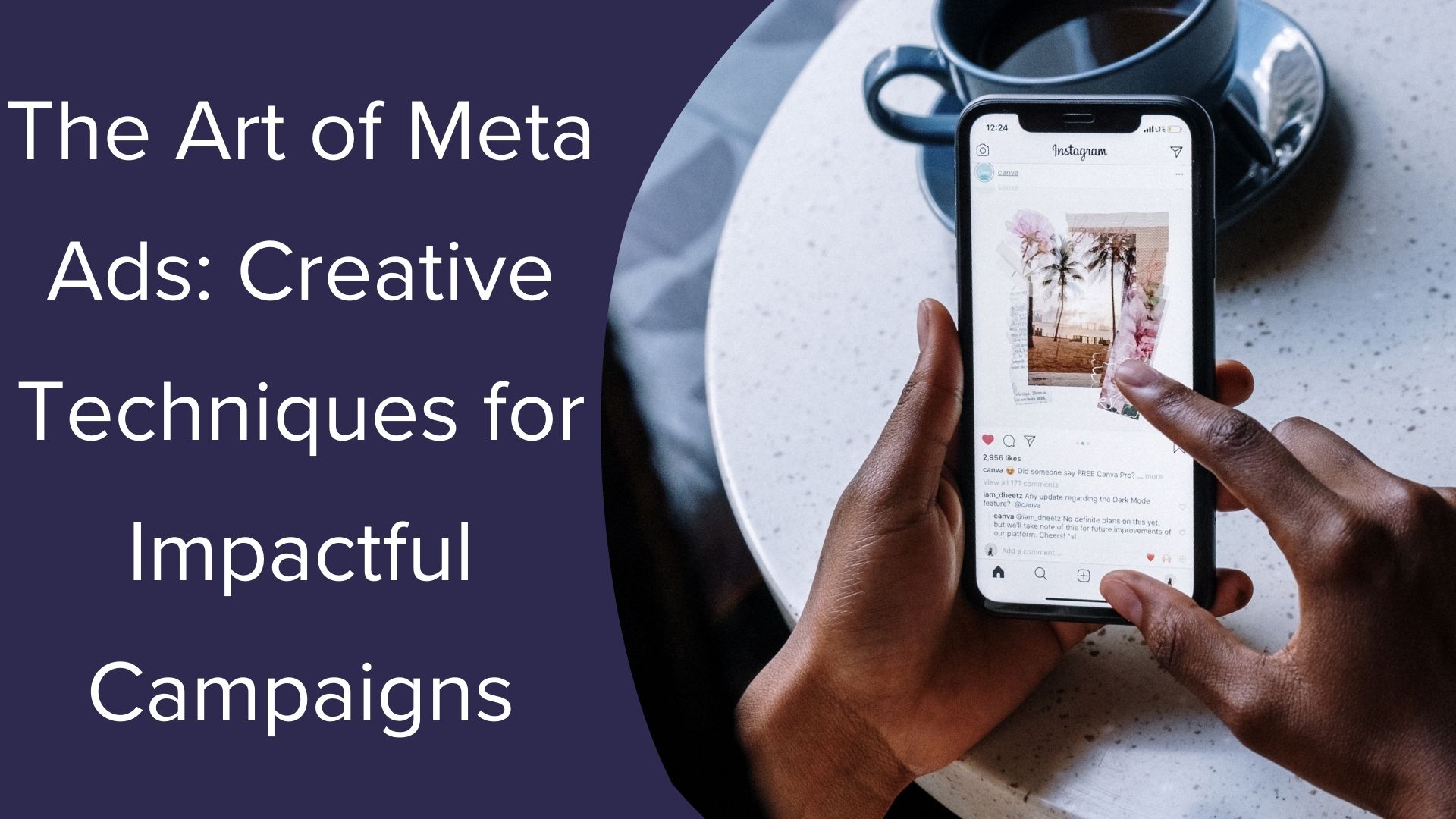Omni-Channel Marketing: How to Make Your Brand Shine Across Channels

Are You Using Omni-channel Marketing? If Not, Why Not?
Ralph Waldo Emerson wrote, “A foolish consistency is the hobgoblin of little minds….”
That quote is as relevant now as when written in the 1800s. It means people should never cling to past opinions and ideas that are no longer true.
You may think, “That’s great, but how is what some guy said 200 years ago relevant to the internet, digital marketing, or omnichannel marketing?”
Those of us who work in digital marketing live by this quote subconsciously. We’ve seen how quickly the best ways to achieve results become dated. We know we have to be ready to pivot fast. After all, the internet changes rapidly – sometimes overnight.
What Does That Have to Do with Omni-channel Marketing?
If you’re not maximizing your use of omni-channel marketing and keeping up with current customer expectations, you’re falling behind what’s successful on the internet. Even worse, you’re missing out on incredible opportunities to make your e-commerce brand shine.
Are you unsure why you need omni-channel marketing?
Are you unsure If you’re using omni-channel marketing?
Do you need a refresher on omni-channel marketing concepts?
If any of these apply, read our previous article, Is Being Present Enough for E-Commerce Omni-Channel Marketing?
If you aren’t maximizing your use of omni-channel marketing, now is the time to seriously consider doing that. When you do it well, it can help move your e-commerce brand to the next level no matter what outside circumstances occur.
Photo from Pinterest [you may have a better one – not sure where Pinterest got this or if it’s copyrighted – yikes]
What’s Your Omni-Channel Marketing Strategy?
Before you even think of creating omni-channel marketing for your e-commerce brand, you need a strategy. Without a plan, you’re just throwing darts blindfolded at a dart board and hoping something hits the board instead of the wall. And that’s an expensive game for your e-commerce brand to play.
What do you want to achieve overall, immediately, and long term? What do you want to achieve from each channel, immediately and long term? How can you turn that into a cohesive message that will resonate with your target audience segments across channels?
Depending on the channel, those goals may seem to differ because each channel has strengths and weaknesses. Play to the channel’s strengths so you can avoid its weaknesses as much as possible while staying true to your brand and your target audience.
Need another reason to develop a strong, detailed omnichannel strategy?
“Companies with omni-channel customer engagement strategies retain on average 89% of their customers, compared to customer retention rate of 33% for companies with weak omnichannel customer engagement.” Invesp “The State of Omnichannel Shopping – Statistics and Trends“
Notice the quote says “customer engagement strategies.” It won’t always be about an immediate sale. Often it will be higher up the sales funnel – building trust and rapport with your prospect, so they can feel safe enough to move to the next level in your sales funnel.
Let’s look at a few elements you’ll want to include in your strategy.
Is Your Branding Consistent Across Channels?
Consistency may be the hobgoblin on little minds, but branding consistency is critically essential in omnichannel marketing. Your e-commerce brand image, tone, and voice must be consistent in all things and on all channels.
Why? Your customers and prospects pick up quickly on the slightest brand inconsistency, even when unintentional. And they either consciously or subconsciously interpret that to imply something is wrong with your product, brand, and e-commerce company. Nothing will cause them to scatter to the winds like brand inconsistency.
Whether a prospect or an existing customer encounters your e-commerce brand at a brick-and-mortar location, an event, on your website, on YouTube, through an influencer, on any social media platform, or in any other form, your branding must be easily identifiable and consistent.
With that consistency, your brand recognition will flow across all channels. Your prospects and customers will quickly recognize your brand no matter where they encounter it. And every time they encounter it, that recognition will build more curiosity, trust, and rapport. Building those qualities will take them one more step along your sales funnel toward a purchase decision.

Should Your Message Be Consistent Across Channels?
Your branding has to be consistent across channels.
Your messaging tone needs to be consistent with your brand; however, your message will likely vary on each channel. How different depends on the channel and your target audience’s position in their buyer’s journey.
You don’t want contradictory information or messaging on different channels because that’s a red flag to prospects and customers that something is wrong. They’ll interpret that to mean they can’t trust you, which will send them running because they will lose trust.
Your goal is to personalize your brand messaging just enough to ensure it appeals to your target audience segment that frequents that particular channel.
Key Factors Involved in Deciding How to Personalize Messaging
- Have you defined your specific segmented target audience for each channel? While staying true to your overall brand, your messaging needs to appeal to the specific target audience segment that frequents that particular channel.
- Specific messaging that works for one channel may not necessarily work for another. Why? The audiences are often quite different as is the position in their purchase journey.
- Knowing the details of each channel’s audience and how those relate to your target audience segment will help you create relatable messaging for that channel. And that will, in turn, boost your response and results.
- What is your overall multichannel marketing goal? Your messaging needs to consistently reflect that goal as well as your goal for personalizing each channel’s target audience segment.
- Each of your target audience segments has unique qualities that affect how they respond to your message. Hitting those accurately will boost your success.
- Each channel has its own peculiar operating rules, assets, and liabilities. Take those into account when pulling together your messaging for each channel.
- A/B testing is a great way to discover which of two slightly different messages will pull the most interest and the best results.
- Learn from your mistakes. Analytics and data are your friends. Research your prior attempts on each channel, look at what worked well and could have worked better. Analyze both.
- Is there a way to tweak your work to produce even better results? If so, fine-tune it to emphasize the aspects that worked well – not by repeating them but by adapting and including those qualities in the new campaign.
- If tweaking isn’t the answer, look as objectively as possible at what went wrong. Create a new campaign using the tips here. Set it aside – take a break. Then tweak anything your gut instinct says isn’t quite right. If you’ve created at least two ads and can’t choose which one’s best, use A/B testing to ensure you get the best response possible.
- Rinse and repeat.
Consistency is Key
The overall goal is for your target audience to perceive that they have a consistent experience with your e-commerce brand no matter what channel they use when they encounter it, and no matter where your audience is in their purchase journey.
After all, that is the internet user’s expectation in 2022. They expect your brand and company to appear the same always. If you give your target audience even the slightest hint either of those may not be true, they will run.
Why? Sadly, pretty much everyone online has been scammed at some point. People ordered products that never showed up or were vastly different than portrayed. They were also often stuck when the company disappeared. Those kinds of scams create gun-shy internet shoppers.
Your goal is to ensure they know your brand is not one of those fly-by-night e-commerce brands. Once they wholeheartedly believe you’re legit, they will become loyal customers and tell all of their friends.
Retargeting With Omni-Channel Marketing Magnifies Your Results
Retargeting comes into play as your target audience segments see your consistent branding and interesting messages across channels. That process keeps your brand top of mind with them and helps move them toward a purchase decision faster.
Retargeting is where the tried-and-true Marketing Rule of 7 comes into play.
“There’s an adage in marketing called the rule of seven — the thought being that in order for messaging to be effective, it must be seen by your target prospect seven times. Science backs up this theory: Ebbinghaus’s forgetting curve shows that there’s a dramatic decline in information retained over the course of a week. With that said, to be effective in marketing, advertising or public relations, messaging must not only be clear and compelling — it must also be memorable if you are going to move the needle.” Forbes, How to Maximize Your Marketing Message by Michelle Abdow.
Ebbinghaus’ forgetting curve says people have to see something seven times before they trust it enough to act on it, but they may forget it in a week. This odd human trait is a bonus for e-commerce brands using omnichannel marketing.
Your enticing consistent and cohesive omnichannel campaign will achieve a better cumulative result based partly on this weird human trait. Why? Your target audience will see your campaign seven times across channels much faster than when Ebbinghaus conducted his study.
What Could Successful Omni-Channel Marketing Mean For Your E-Commerce Brand?
When omnichannel marketing first began online, it was an incredible bonus for the e-commerce brands that embraced it. Given the current state of internet e-commerce marketing, it has now become the expectation. Any e-commerce brand that isn’t using it is falling behind quickly because this practice has become so readily adopted.
The trick is doing it well. But then that’s always the trick.
Pulling all the pieces together can become overwhelming. You also must stay on top of tweaks and modifications to ensure your omni-channel marketing campaigns are optimized for success.That’s where AdQuadrant can make a big difference. We thrive on omni-channel marketing and love finding ways for our clients to make the most of their campaigns. An integral part of our mission is partnering with our clients to scale their e-commerce brand to the next level and beyond. Let’s talk about how we can maximize the return on your e-commerce brand’s omni-channel marketing results.
About the author: Merikay Noah has over 20 years’ experience in digital marketing. She worked with e-commerce B2C and B2B websites of all kinds, from Fortune 100s to small start-ups, at two of the top three search engines and at a Los Angeles ad agency. Her successful e-commerce book publishing website, PopcornReads.com, attracted an international audience of bookaholics for over eight years. She now lives in the Blue Ridge Mountains, where she works as a copywriter and loves to hike with her small but fierce doggy protector – Miss Lucy.




